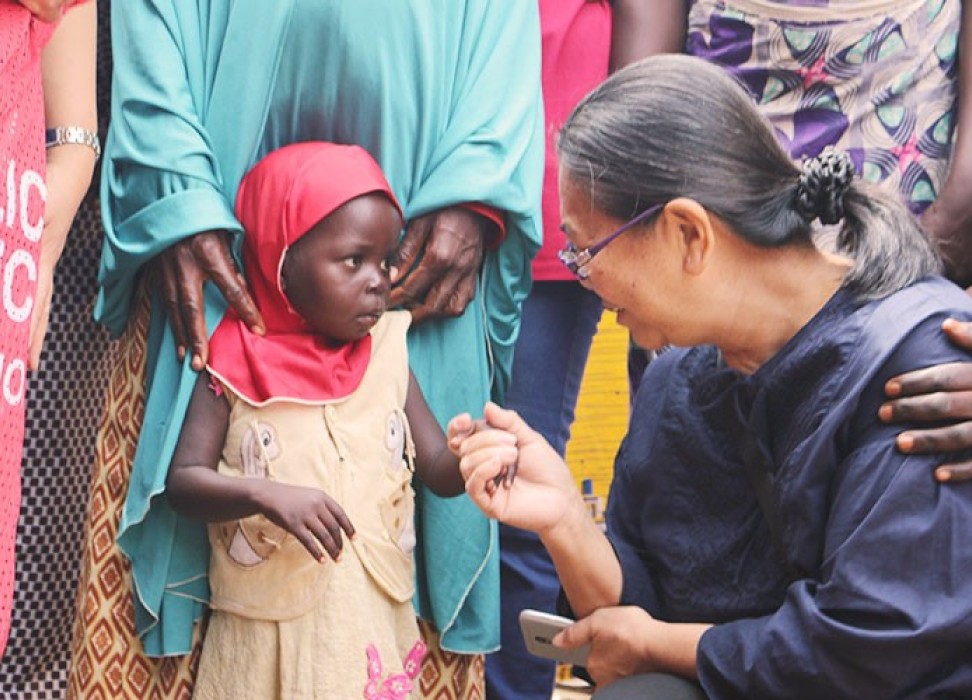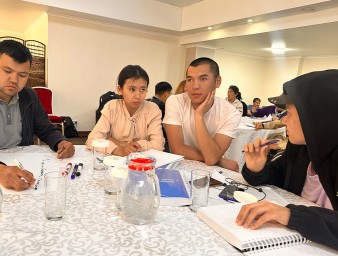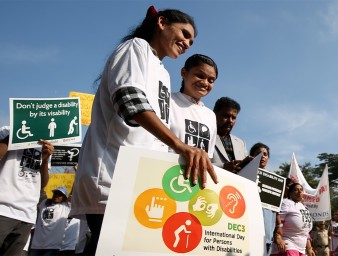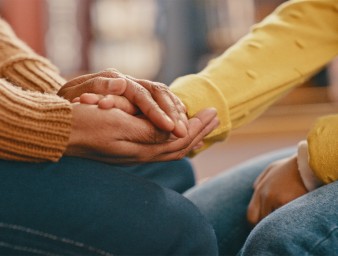Expert: Give displaced persons with disabilities a chance to participate
08 July 2020

It is difficult for people who are internally displaced to receive the services and enjoy the rights that are inherent to all, but when the lens of disability is added, it can lead to neglect and exclusion, said Cecilia Jimenez-Damary.
“Persons with disabilities may face discrimination before and during displacement,” she said. “Their challenges may be overlooked by aid and development providers. Compounding this marginalization, persons with disabilities continue to be considered primarily as recipients of aid: their potential to make contributions unexplored.”
Jimenez-Damary is the Special Rapporteur on the human rights of internally displaced persons (IDPs). In her report presented before the Human Rights Council, she urged Member States to ensure that persons with disabilities who are also IDPs participate in decision making of any policies or projects affecting them.
“Persons with disabilities wherever they are, should actually be part and parcel of solutions and not be seen as problems,” she said. “And the best way to do this is to enable them to participate in the management of their lives.”
According to the World Health Organization (WHO), around 15 percent of the world’s population have a disability. Applying this estimate to the 41.3 million IDPs worldwide in 2018 (according to the 2019 Global Report on Displacement), this means there are around 5 million IDPs who could have a disability, Jimenez-Damary said. Such a vast number of people, means there needs to be correct and appropriate legal and policy frameworks to support IDPs with disabilities populations, she said.
In her report, Jimenez-Damary makes a number of recommendations, but she stressed four main points: First, IDPs with disabilities should not be left behind in any policy protection, assistance or inclusion enable by the States, by UN agencies or others. Second, the importance of participation of IDP with disability communities and organizations in any solution or program. Third, she reminded everyone that IDPs with disabilities have the right to the full gamut of human rights guaranteed under law.
Finally, Jimenez-Damary emphasized the need for visibility.
“The best way to include IDPs with disabilities (in projects and policies) is to ensure that they are visible and that there are very specific programs that will really be implemented with them or with organizations that serve them, that will lead to their protection and to their inclusion in assistance.”
The COVID-19 pandemic has created an extra layer of challenge and hardship for IDP populations in general, and those with disability more so, she said. The majority of policies implemented during the pandemic that do address IDPs have no provision for those with disabilities, she added.
But there is a chance to build back better, Jimenez-Damary said. With emergency measures being relaxed in many countries, now is the time to consult with IDPs with disabilities on how best to help in the reintegration process.
“I will say this again, we must ensure that IDPs with disabilities are actually consulted on how the relaxations of measures and the building back better policies will be decided upon and implemented,” she said. “The programming must include participation of IDPs with disabilities. That is the only way IDPs with disabilities can, not merely express what are their real needs and how they see their future vis a vis relaxation measures, but also have their rights guaranteed.”
8 July 2020
Cecelia Jimenez-Damary explains more about IDPs and participation in the video below.



